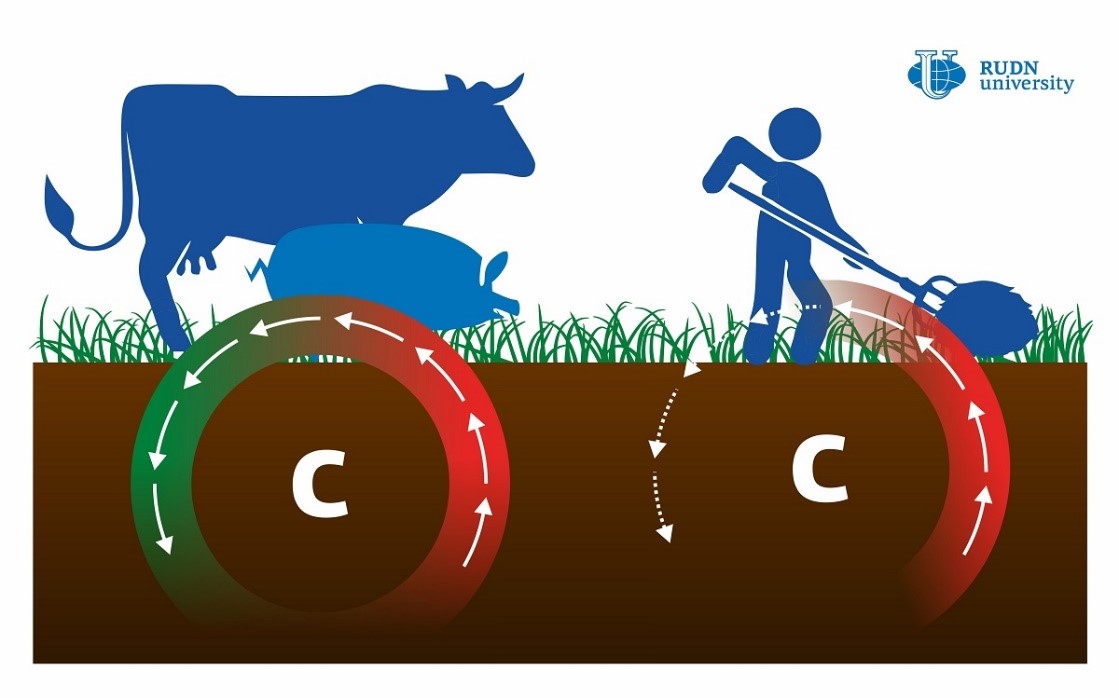Mowing Is More Harmful to Soil Than Grazing

The cycle of organic carbon in the meadow soil depends to a great extent on how the soil is managed. Meadows are often mowed or used as pastures, and both these practices can lead to unwanted damage and tearing of the main aerial parts of plants. However, it is still not clear which process is more harmful to the soil. A team of biologists including a scientist from RUDN University analyzed soil samples taken at experimental land plots in Western France that have been used as pastures or regularly mowed for 13 years. Using mass spectrometry and gas chromatography, the team measured the levels of organic carbon and other compounds and analyzed microbial activity in the samples. The soil of the pasture turned out to contain more carbon than that of the mowed meadow. According to the biologists, the sources of carbon in the pastures are more diverse and easily available which supports the activity of microorganisms. 50% to 70% of all carbon consumed by grazing animals returns to the soil in the form of manure within several days. This makes microbial functioning more efficient and increases carbon reserves in the soil. In the case of mowed meadows, the loss of soil nutrients has to be compensated by mineral fertilizers that stimulate enzyme activity, thus accelerating the decay of organic compounds. This might have a negative impact on the environment.
“According to our study, mowing and grazing have a different effect on the biogeochemical functioning of meadow soils. Although both systems are generally beneficial for organic carbon reserves, moderate cattle grazing is more advantageous because it leads to better soil quality and more efficient microbial functioning,” said Evgeniya Blagodatskaya, a Ph.D. in Biology and a senior researcher at the Center for Mathematical Modeling and Design of Sustainable Ecosystems at RUDN University.
The results of the study were published in the Applied Soil Ecology journal.
Matilda Pavlovna Mityaeva was born in 1925. In November 1942, she volunteered for frontline duty. She participated in the Great Patriotic War from November 1942 to June 1945 as part of the 53rd Infantry Division of the 475th Infantry Regiment. She was wounded twice.
The team led by Sergey Zyryanov, Head of the Department of General and Clinical Pharmacology, became the winner of the All-Russian competition of scientific projects "Technologies for Human Health".
RUDN University constantly adapts to the changes of the modern world and responds to challenges flexibly. This allows us to keep the standard of a world-class research university. The sphere of science is no exception. Peter Dokukin, Head of the Research Division, presented the updated R&D Programme at the meeting of the RUDN University Academic Council.
Matilda Pavlovna Mityaeva was born in 1925. In November 1942, she volunteered for frontline duty. She participated in the Great Patriotic War from November 1942 to June 1945 as part of the 53rd Infantry Division of the 475th Infantry Regiment. She was wounded twice.
The team led by Sergey Zyryanov, Head of the Department of General and Clinical Pharmacology, became the winner of the All-Russian competition of scientific projects "Technologies for Human Health".
RUDN University constantly adapts to the changes of the modern world and responds to challenges flexibly. This allows us to keep the standard of a world-class research university. The sphere of science is no exception. Peter Dokukin, Head of the Research Division, presented the updated R&D Programme at the meeting of the RUDN University Academic Council.